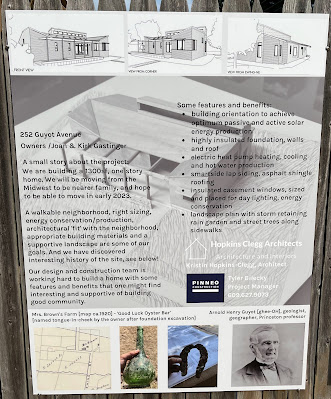The town, named after the PawPaw River, which in turn was named by the indigenous people after the pawpaw trees that grew along it, has a population of about 3500. Though the downtown preserves some historic feel, the town has not exactly embraced its namesake. Grapes ornament the town logo on the water tower and elsewhere, not pawpaws.
Upon arrival, I asked my phone where I might find a pawpaw in Paw Paw, and was directed to the post office, where I navigated past redbuds and callery pears before finding this pawpaw tucked around the side.The flavor of a pawpaw, a rich, creamy combination of mango, banana and pineapple is appealing to some but not everyone. Our host was more generous with her knowledge and assessment, mentioning a couple places the pawpaw grows in town, including at one of the schools.
Still, it remains a singular fruit, the only member of the tropical custard apple family, Annonaceae, to adapt to northern climates. And some of us still remember the song: "Way down yonder in the pawpaw patch"--a pawpaw patch that, in PawPaw, Michigan, became a lake with a lovely breeze to carry our music.
Update: Turns out that, if you live in PawPaw Michigan, you'd have to drive to southern Indiana or Ohio to find a festival celebrating the pawpaw. PawPaw's festival celebrates grapes.






















































